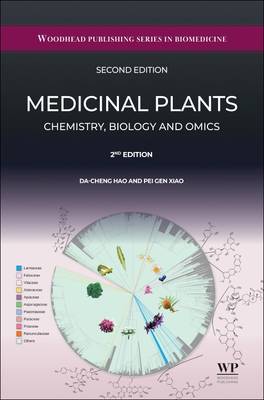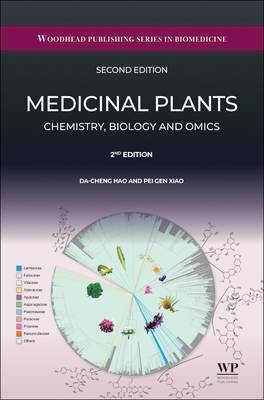
- Afhalen na 1 uur in een winkel met voorraad
- Gratis thuislevering in België vanaf € 30
- Ruim aanbod met 7 miljoen producten
- Afhalen na 1 uur in een winkel met voorraad
- Gratis thuislevering in België vanaf € 30
- Ruim aanbod met 7 miljoen producten
Zoeken
€ 288,45
+ 576 punten
Uitvoering
Omschrijving
Medicinal Plants: Chemistry, Biology, and Omics, Second Edition is a reference to help researchers identify and master the patterns in the distribution of medicinal compounds on the phylogenetic tree to explore new drug resources and develop novel therapies against different diseases. The book provides a deeper understanding of how the interrelationship between phytometabolites, bioactivities and omics techniques facilitates sustainable conservation and application of phytomedicine resources. Now in 2nd edition, the contents have been updated to include topics as machine learning applications, geographic distribution of phytometabolites, comparative analysis of alkaloids, expanded coverage of selected taxa, and conditions like cardiovascular disease and cancer. The book is structured around chemotaxonomy. After an introduction and review of taxonomy, chemistry, biology and omics, the authors dive into a taxon-guided exploration of medicinal resources for Fritillaria, Chelidoniae, Dichocarpum, Aconitum, Cimicifugeae, Clematis, Potentilla, Rubus, Cannabis, and other taxa. All chapters follow a similar and consistent structure, offering detailed information on each of them. Researchers in phytopharmacology can acquire in-depth understanding of the interrelationships between chemistry, biology and omics, as well as the implications of the link between phylogeny, phytometabolites and bioactivities in medical biotechnology and sustainability. Clinicians can better understand the principles of mutual interactions between phytometabolites and drug efficacy.
Specificaties
Betrokkenen
- Auteur(s):
- Uitgeverij:
Inhoud
- Aantal bladzijden:
- 890
- Taal:
- Engels
- Reeks:
Eigenschappen
- Productcode (EAN):
- 9780443417832
- Verschijningsdatum:
- 1/02/2026
- Uitvoering:
- Hardcover
- Formaat:
- Genaaid
- Afmetingen:
- 152 mm x 229 mm

Alleen bij Standaard Boekhandel
+ 576 punten op je klantenkaart van Standaard Boekhandel
Beoordelingen
We publiceren alleen reviews die voldoen aan de voorwaarden voor reviews. Bekijk onze voorwaarden voor reviews.








